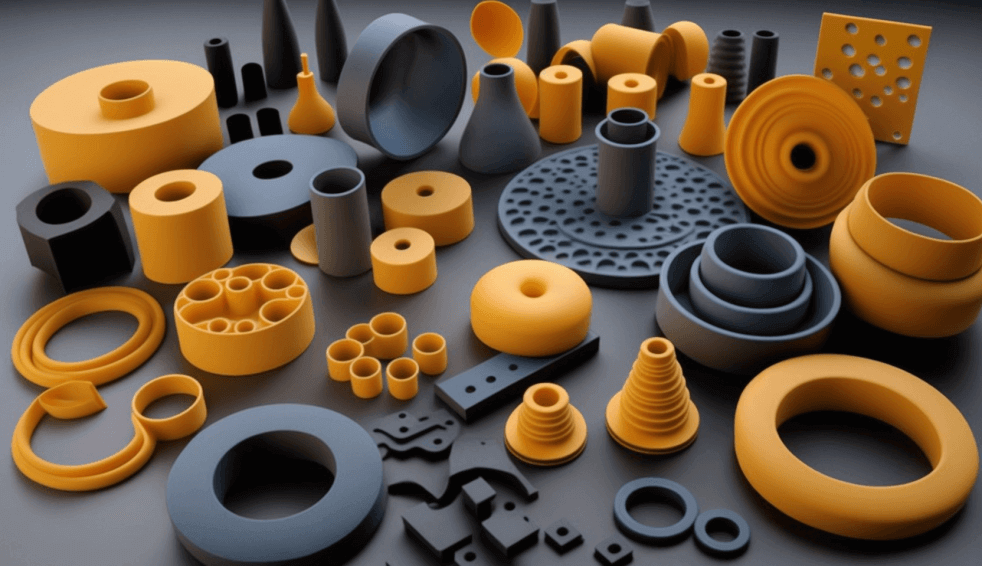Manufacturing of Rubber Parts

Contact : +91 97404 04503
Manufacturing of Rubber Parts: A Comprehensive Overview
The manufacturing of rubber parts plays a vital role in multiple industries, ranging from automotive to healthcare, aerospace, construction, and electronics. The versatility, flexibility, and durability of rubber make it an indispensable material in modern engineering and industrial applications. Whether for seals, gaskets, tires, or custom-designed components, the production of rubber parts is a complex process that requires precision, technical expertise, and adherence to quality standards.
Key Processes in Rubber Part Manufacturing
Rubber part manufacturing typically involves several steps, each critical to achieving the desired specifications. The following are the primary processes involved:
-
Material Selection
The process begins with selecting the appropriate rubber material. Natural rubber, synthetic rubbers like neoprene, silicone, EPDM, nitrile, and polyurethane are commonly used depending on the specific requirements of the application. Factors such as temperature resistance, chemical exposure, and mechanical stress dictate the material choice. -
Mixing and Compounding
Once the raw rubber is selected, it is combined with various additives, including fillers, stabilizers, accelerators, and vulcanizing agents. This compounding process enhances the properties of the rubber, improving its strength, elasticity, and resistance to environmental factors. The quality of the rubber compound is crucial, as it directly affects the performance and longevity of the final product. -
Molding Techniques
Rubber parts are manufactured using various molding methods, including:- Injection Molding: In this process, heated rubber is injected into a mold cavity at high pressure, forming the desired shape. It’s ideal for producing large quantities of high-precision rubber parts.
- Compression Molding: This involves placing pre-measured rubber material into a mold and applying pressure to form the part. It is suitable for larger, simpler designs.
- Transfer Molding: Similar to compression molding, this method involves forcing rubber through a small hole into the mold cavity, providing more control and reducing waste material.
- Extrusion: For long rubber components like hoses and seals, extrusion is used, where rubber is forced through a shaped die, creating continuous profiles.
-
Vulcanization
Vulcanization is the process of curing rubber by adding sulfur or other curatives under heat and pressure. This chemical reaction improves the elasticity, durability, and strength of the rubber, making it more suitable for industrial applications. -
Finishing and Quality Control
After molding, the rubber parts undergo trimming, buffing, and surface treatments to meet precise tolerances and appearance standards. Rigorous quality control checks, including dimensional analysis, hardness testing, and durability assessments, ensure that the parts meet industry-specific requirements.
Applications of Rubber Parts
Rubber parts are critical in various industries:
- Automotive: Rubber is used in tires, gaskets, seals, and vibration dampers to ensure safety and longevity in harsh conditions.
- Healthcare: Rubber components in medical devices, gloves, and seals are essential for maintaining hygiene and reliability.
- Aerospace: Lightweight and high-performance rubber seals and gaskets are vital for aircraft systems.
- Construction: Weather-resistant rubber parts like seals, hoses, and expansion joints help in maintaining structural integrity.
Sustainability and Advancements in Rubber Manufacturing
The rubber manufacturing industry is increasingly focusing on sustainability by recycling and using eco-friendly materials. Advances in rubber compounding and manufacturing technologies, such as automation, 3D printing, and computer-aided design (CAD), are driving innovation. These developments enable manufacturers to produce high-quality rubber parts more efficiently, with reduced waste and lower environmental impact.
Conclusion
Manufacturing rubber parts is a crucial industry that supports a wide range of applications across various sectors. With advancements in technology and growing emphasis on sustainability, rubber manufacturing is poised to continue its essential role in industrial development. High-quality rubber parts, designed with precision and optimized for specific applications, ensure that industries can operate smoothly, reliably, and safely.
